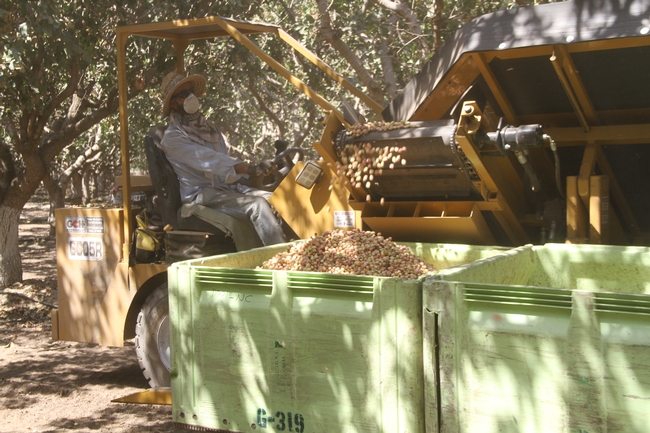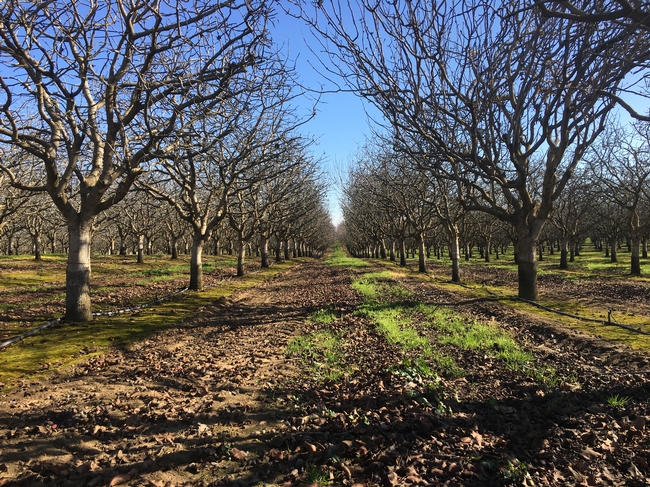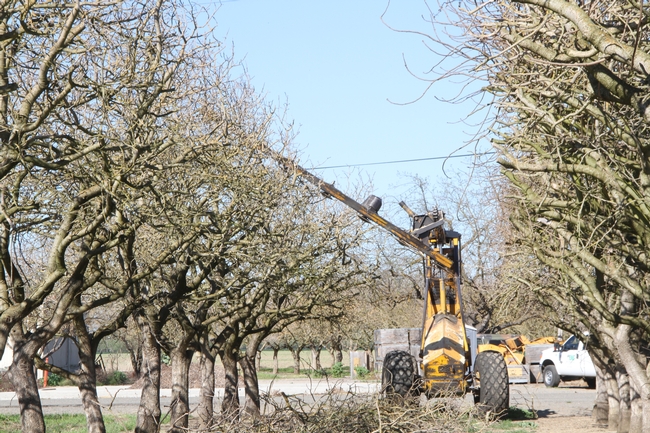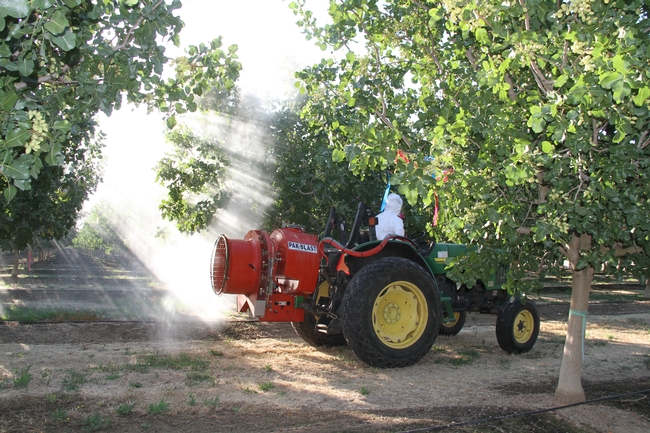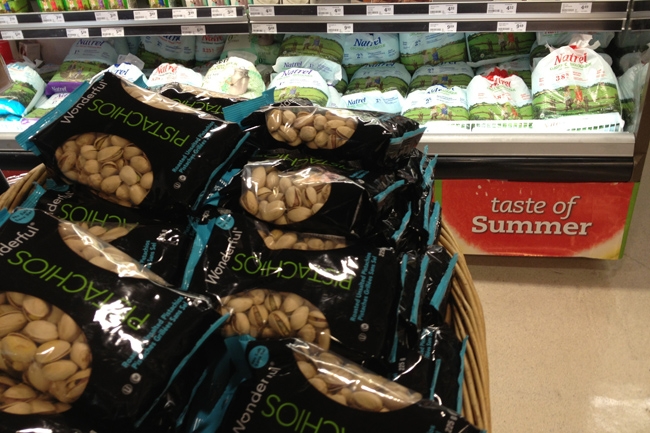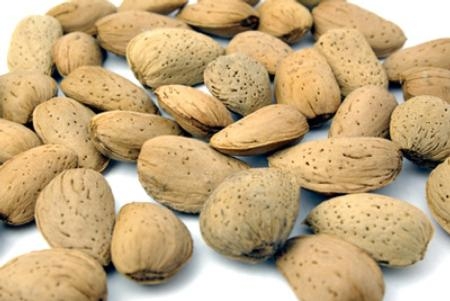Posts Tagged: pistachios
Pistachio production costs outlined in UC study
The popularity of pistachios as a healthy snack continues to drive demand. California's pistachio crop was valued at $1.94 billion in 2019, according to the California Department of Food and Agriculture.
For growers considering planting an orchard, the costs and returns of establishing and producing pistachios in the southern San Joaquin Valley are outlined in a new study by UC ANR's Agricultural Issues Center, UC Cooperative Extension and the UC Davis Department of Agricultural and Resource Economics.
“New growers use this information to create their budget for production loans for their bank,” said Jeffrey Gibbons, plant manager of Setton Pistachio of Terra Bella. “Owners use this information so they can be assured their farm managers are not overcharging them for farming costs. Farm managers use this information to see how they compare to the industry. Setton Pistachio uses this information to project budgets for future planting scenarios.”
UC Cooperative Extension specialists and farm advisors routinely refer people interested in planting pistachios to the cost study.
“I use this every time I have a new grower,” said Louise Ferguson, UC Cooperative Extension specialist in the UC Davis Department of Plant Sciences and co-author of the study. “It not only gives a good estimate of establishment and production costs, and projected net returns, but ensures no details are missed in planning. It is an invaluable template for pistachio production.”
Elizabeth Fichtner, UC Cooperative Extension orchard systems advisor for Kings and Tulare counties, agreed. “The cost study documents are one of the first resources I assemble for new growers.”
The new study estimates the costs and returns of establishing and producing pistachios using low-volume drip irrigation in the southern San Joaquin Valley. The hypothetical orchard is planted at 128 trees per acre, with an expected life span of 40 years.
The authors describe the assumptions used to identify current costs for pistachio establishment and production, material inputs, cash and non-cash overhead and a ranging analysis table, which shows profits over a range of prices and yields.
"Pistachio growers, potential future growers, land leasers, appraisers and loan officers benefit from detailed and current information included in the studies,” said Craig Kallsen, UCCE citrus and pistachio farm advisor for Kern County.
Gibbons said, “Setton Pistachio refers potential growers to this information as they determine if they want to plant pistachios. Setton Pistachio appreciates this information if it is current. If it is too old, it is not reliable, and there is no other good source for unbiased pistachio development information.”
For a grower, deciding not to plant pistachios based on information in the cost study can be just as economically valuable as deciding to plant pistachios based on the cost study, said Kallsen.
“The information in the cost study can prevent a grower from making a million-dollar mistake by planting a crop that is not suitable for their soil, water availability or for an economic reason not related to crop environment/adaption suitability such as length of time to first harvest or high cost of establishment,” he said.
Reliable estimated costs for a crop grown mostly in California may be hard to find from a source other than UC. This study was co-authored by 17 UCCE farm advisors and specialists and a pomology professor at California State University, Fresno, with input from growers.
“This study summarizes the knowledge learned and used to build California's pistachio industry from 40,000 acres in the 1970s to over 400,000 acres and a 1.1-billion-pound crop in 2020,” Ferguson said.
The new study, “Sample Costs to Establish and Produce Pistachios, Low-Volume Irrigation, San Joaquin Valley South - 2020” can be downloaded for free from the UC Davis Department of Agricultural and Resource Economics website http://coststudies.ucdavis.edu. Sample cost of production studies for many other commodities are also available on the website.
“UC cost studies are always something I alert potential growers to when they are considering whether to plant an orchard,” said Phoebe Gordon, UC Cooperative Extension orchard crops advisor for Madera and Merced counties. “New growers have expressed to me a few times that they find the cost study useful.”
For an explanation of calculations used in the study, refer to the section titled Assumptions. For more information contact Donald Stewart, University of California Agriculture and Natural Resources, Agricultural Issues Center, Department of Agricultural and Resource Economics, at (530) 752-4651 or destewart@ucdavis.edu. To discuss this study with a local UC Cooperative Extension advisor, find the UC Cooperative Extension office in your county at https://ucanr.edu/About/Locations.
By the bagful: pistachios and milk
While visiting my brother in Toronto this summer, we stopped by a grocery store and I was struck by two things: pistachios and milk in bags.
Stacked high in the back corner were bags of California pistachios – a reminder of how prominent a producer the Golden State is and a sign of the marketing power of its largest pistachio processor, Paramount Farms. The United States is the world’s leading pistachio producer, and 99 percent of the country’s crop comes from California.
Pistachios are California’s third-biggest nut crop, behind almonds and walnuts, and the state’s sixth-leading agricultural export, with markets spanning from Canada to China.
To help continue to improve production, the pistachio industry is turning to the University of California. In January, the California Pistachio Research Board announced it will donate $1.5 million to support a UC Cooperative Extension specialist to conduct nut and fruit disease research. This specialist position will help UC Agriculture and Natural Resources fulfill its mission as well as serve the pistachio industry’s needs.
UC research plays a key role in keeping California the nation’s leading agricultural state. Partnerships such as the one with the Pistachio Research Board – and previous ones with the California Rice Research Board and California Table Grape Commission – represent a new funding model to extend that role.
On the dairy side, California is known for happy cows; eastern Canada is known for bagged milk. Yes, milk is sold in bags of three, each 1.33 liters. My sister-in-law likes the bags because the packaging is more environmentally friendly than plastic jugs. You even can purchase specially designed pitchers for dispensing bagged milk. The key is cutting the tip of the bag properly, so it can pour smoothly – not too slow and not too fast. It’s an interesting concept, but a little messy. Will milk bags catch on in California? I think that will be a tough nut to crack.
Nuts contribute protein, fiber and healthy fat to diet
Two free publications on nuts have recently been published by ANR — Nuts: Safe Methods for Consumers to Handle, Store, and Enjoy and Nuts: Safe Methods for Home Gardeners to Harvest, Store, and Enjoy.
Both publications outline the nutritional benefits of eating nuts, including information from the FDA affirming that:
- Including nuts in a diet low in saturated fat and cholesterol may help reduce the risk of heart disease.
- Almonds, pecans, pistachios, and walnuts contribute to health through their protein, dietary fiber and unsaturated fat.
The consumer publication includes a handy table outlining optimal freezer and refrigerator storage times for a variety of nuts as well information on nut allergies, nutrition and resources for recipes.
Home gardeners with nut trees will find useful information on harvest times and methods, hulling and drying procedures, safe handling procedures, storage, and nutrition information for almonds, chestnuts, pecans, pistachios and walnuts.
Inside both publications is a discussion of recent bacterial outbreaks in nuts and the steps producers have taken to minimize the risk of exposure to consumers.


